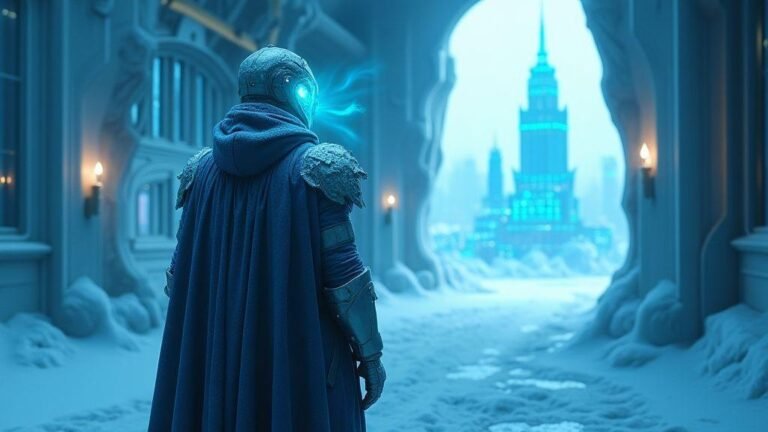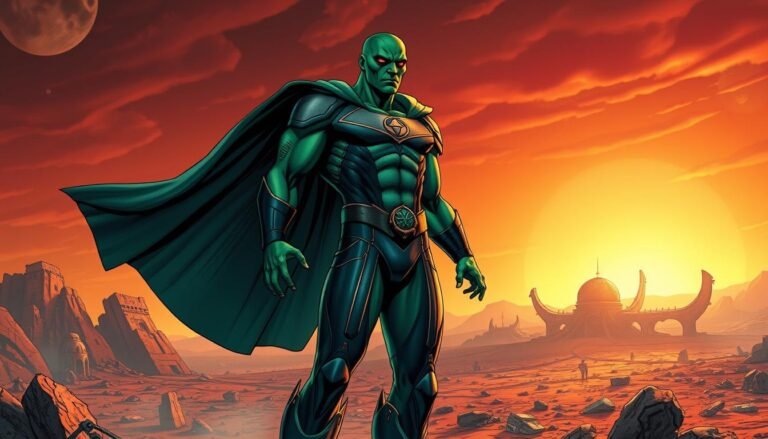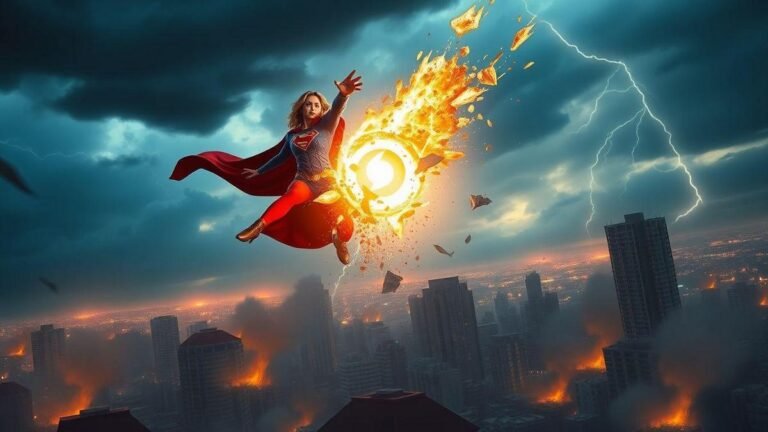The Flash’s New Speed Breaks Reality
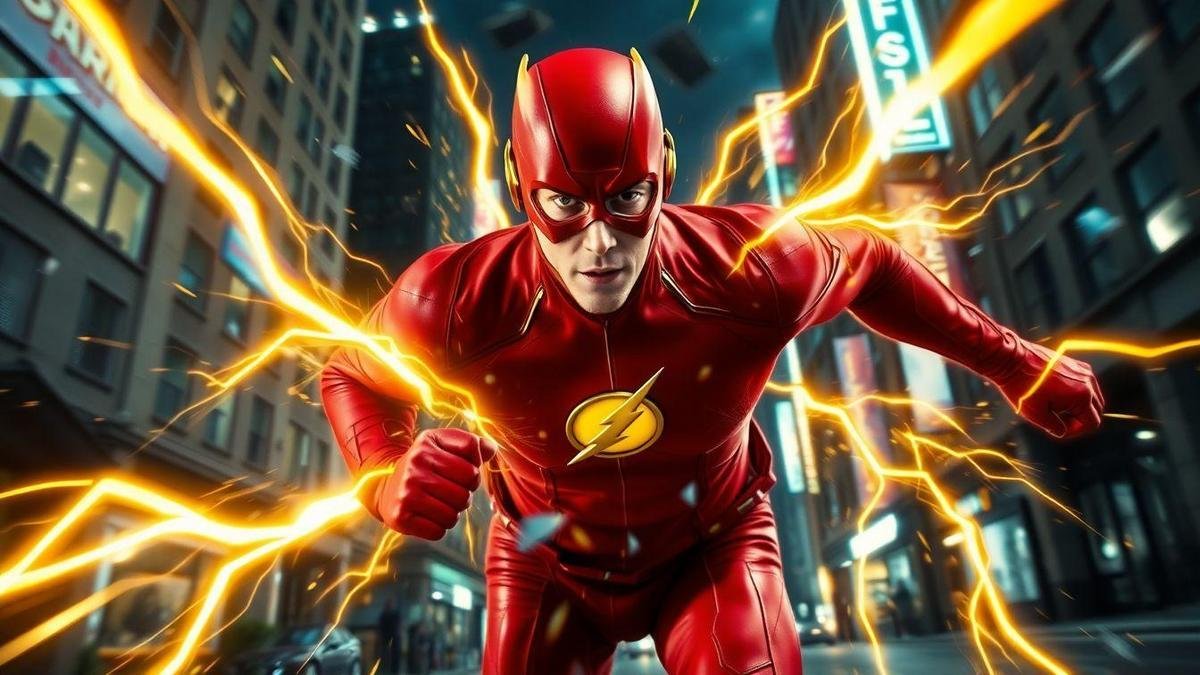
The Flash’s New Speed Breaks Reality throws you into the wild science behind speedsters. You dig into the Speed Force and learn why it matters. You see how quantum velocity anomalies and the time dilation paradox can bend time and break cause and effect.
You learn what Flashpoint and the Barry Allen speed paradox mean for reality and your story outcomes. You track how multiverse breaches and spacetime rifts change characters and stakes you follow.
Key Takeaway
- You see reality warp when the Flash runs
- You can’t keep up with his new speed
- You witness time bending and breaking around him
- Your world can change in a blink when he moves
- You feel ripples that affect people and places
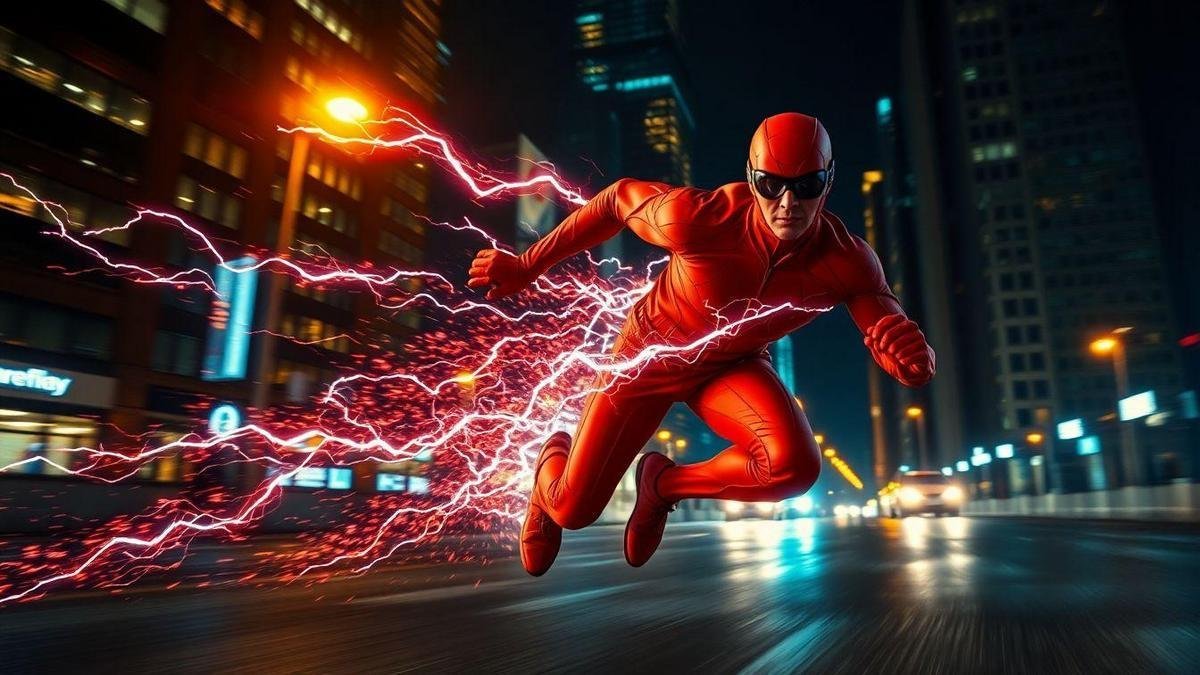
How the Speed Force and quantum velocity explain The Flash’s New Speed Breaks Reality for you
What the Speed Force is and why you should care
The Speed Force is a fictional energy field that gives the Flash his speed. Think of it like a river of power you tap into — a good primer on how writers treat that source can be found in a detailed look at how speedsters access the Speed Force.
In comic logic, the Speed Force explains how the Flash can run faster than light and why you see odd effects like time jumps, memory shifts, and sudden changes in space. Knowing this turns scenes from random magic into consistent rules being bent — so every chase and time-skip lands with purpose.
How quantum velocity anomalies and time dilation show limits you can follow
A quantum velocity anomaly mixes tiny-scale physics with extreme speed. When speed gets wild, particles and chunks of time act strange.
The real physics analogue is Basics of time dilation and relativity: as you move very fast, your clock runs slower than someone standing still. For readers, that means speed has costs — rapid travel can make events out of sync and produce echoes or local mismatches.
| Effect | Cause | What you see in the comic |
|---|---|---|
| Time lag | Near-light speed (time dilation) | The Flash arrives earlier or later than others expect |
| Reality glitch | Quantum velocity anomalies | Objects flicker, memories change, or timelines split |
Use these limits to judge scenes. If the Flash blasts through a city, ask: did time shift? Did cause and effect break? That helps you spot dramatic choice versus plot hole — a reading approach reinforced by essays on foreshadowing and long-form comic craft (and see an accessible primer on quantum behavior for the physics side at Introduction to quantum effects and behavior).
Key terms to know: Speed Force anomaly, quantum velocity anomalies
- Speed Force Anomaly — A glitch or surge in the Speed Force that causes unexpected effects (swapped memories, broken paths of time).
- Quantum Velocity Anomalies — Tiny-scale disturbances that grow when speed becomes extreme; these twist outcomes and spawn local paradoxes.
- Time Dilation — A real physics effect where fast motion slows time for the mover; in comics, writers bend this for dramatic returns or losses.
What Barry Allen’s choices mean for causality in The Flash’s New Speed Breaks Reality you read
When Barry Allen alters time, you see causality flip. The title The Flash’s New Speed Breaks Reality signals this is about more than speed — it’s about how one choice can bend the line linking past, present, and future. For a deeper look at the logic and paradoxes this creates, see Philosophy and paradoxes of time travel.
How Flashpoint and time travel show causality violation for you
In Flashpoint, Barry goes back to save someone and a single act changes many lives. Small changes grow into big ones — like dropping a pebble in a pond and watching rings hit distant shores.
- You get new rules: past actions can erase or remake events.
- You see unexpected trade-offs: fixing one problem creates another.
- You feel tense because outcomes are no longer fixed.
| Barry’s Move | Immediate Change | What you notice |
|---|---|---|
| Stops a death | Timeline shifts | Familiar faces act different |
| Alters battle | Allies vanish | New enemies appear |
| Speeds up time travel | Rules break | Causality feels unsafe |
This table helps you track how a single choice ripples outward and why time travel becomes a moral puzzle — one similar in tone to pieces on trauma and consequence in superhero stories like heroes in crisis.
Why the Barry Allen speed paradox matters to your story outcomes
The speed paradox reshapes plot expectations. If Barry can outrun cause and effect, predictions fail — raising stakes and keeping you guessing.
- Heroes may win now but lose later.
- Villains can gain erased chances.
- Tone can shift fast, from hope to dread.
Think of avoiding a crash: one swerve saves someone and causes a pileup elsewhere. Barry’s choices reweight emotional bets on characters and outcomes — a theme reflected in long-form discussions of ethics and vigilantism in comics.
How these changes affect characters and stakes you follow
When causality bends, characters can change instantly. People you trusted can vanish; allies may act cold; villains gain sudden advantage.
- Character arcs can reset. A hero’s growth might loop back.
- Relationships can break or form in a blink.
- Risk becomes sharper: every choice can mean life or death.
Read the story like a map with shifting roads. Expect sudden turns — you’ll cheer and grit your teeth in the same issue. This kind of narrative instability ties into techniques like unreliable narration and structural continuity decisions.
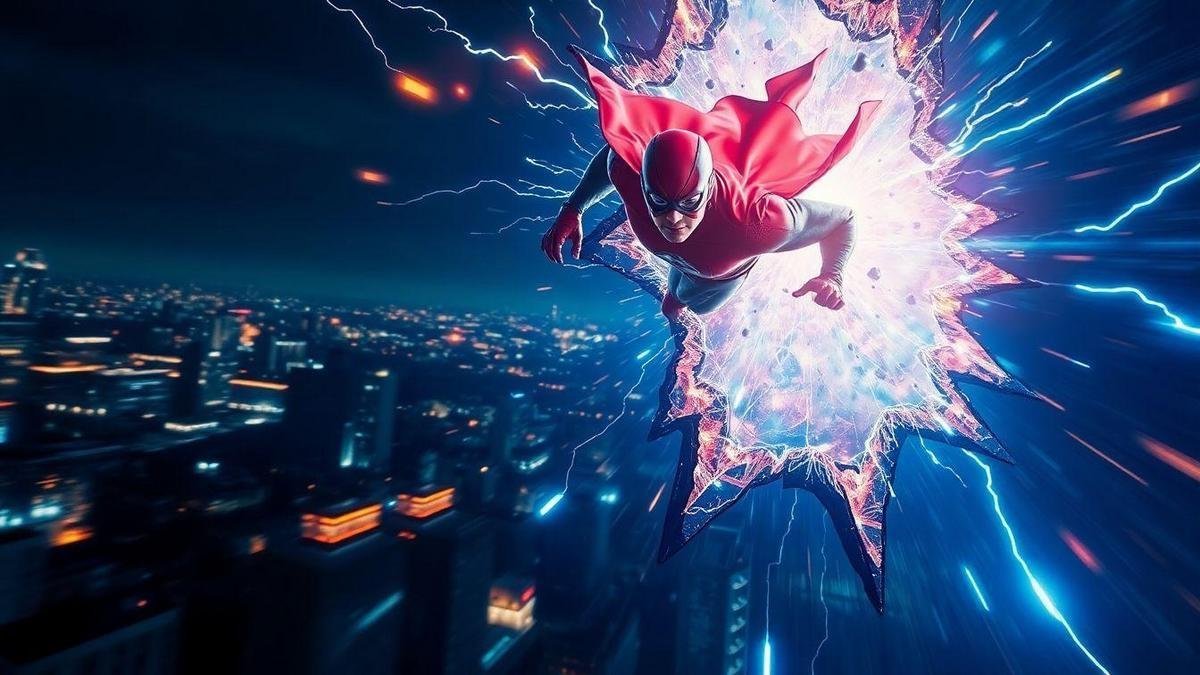
Multiverse risks and spacetime rifts: the speedster multiverse breach behind The Flash’s New Speed Breaks Reality for fans like you
Where comics show reality-warping speed and speed-induced collapse you can check
You can see speed-driven reality changes in several key comics:
| Comic / Event | Year | What happens | Impact on continuity |
|---|---|---|---|
| Flashpoint (Geoff Johns) | 2011 | Barry saves his mother, which rewrites the timeline. | Leads to the New 52 reboot. |
| Crisis on Infinite Earths (Marv Wolfman, George Pérez) | 1985 | Cosmic battle destroys and merges universes. | Major timeline collapse and new continuity. |
| Flash: Rebirth (Geoff Johns) | 2009 | Rebuilds the Speed Force myth and explains speedster effects. | Restores Barry and changes how speed affects time. |
| The Button (Batman/Flash crossover) | 2017 | Time clues and Speed Force traces hint at timeline tampering. | Shows history bleeding across timelines. |
Start with Flashpoint event and timeline reboot and then read Flash: Rebirth for context — both link back to how the Speed Force is used in continuity shifts and are discussed in broader continuity rundowns like micro-continuity and timeline details.
How spacetime rifts, speed and temporal distortion changed DC continuity you know
When speedsters push time, history can snap like a stretched rubber band. Small moves grow into big changes; publishers use those moves to reset stories or fix problems.
- Flashpoint led to the New 52, changing many heroes’ histories.
- Rebirth later restored lost pieces like family ties and hidden histories.
- Villains such as Eobard Thawne warp the Speed Force and create temporal holes that erase memories or shift events — a subject explored alongside villain reveals in pieces like villain secrets and their effects.
Think of it like dropping a stone into a pond: ripples hit far shores. For you, characters can vanish, return, or be different. Editors often let speedster events be the stone that makes the ripples — a tactic also visible in large-scale events such as Final Crisis, Infinite Crisis, and later meta-events like Dark Nights: Death Metal.
What to watch next: speedster multiverse breach, time dilation paradox, quantum velocity anomalies
Keep an eye on these concepts — they show how speed breaks rules and reshuffles reality.
| Concept | What to watch for | Why it matters to you |
|---|---|---|
| Speedster multiverse breach | Events where speedsters cross worlds or break reality barriers. | They reset timelines or spawn new universes; see patterns in major multiverse events like Final Crisis. |
| Time dilation paradox | Scenes where time moves oddly for different people. | You’ll see changed ages, lost years, or sudden memory gaps; these are noted in continuity analyses such as micro-continuity breakdowns. |
| Quantum velocity anomalies | Strange physics tied to extreme speed (glitches, echoes). | These create visual and plot twists that shake continuity and are often foreshadowed in long-form storytelling notes like foreshadowing in comics. |
Read the listed comics and follow new Flash arcs in collected editions. TV episodes often borrow directly from these comic beats — and if you care about how action reads on the page, articles on fight choreography in comic panels and artist reference and visual language show why some speed effects land better than others.
Why The Flash’s New Speed Breaks Reality matters to readers
The Flash’s New Speed Breaks Reality matters because it reframes consequences in superhero stories. Speed isn’t just a power — it’s a storytelling tool that can reset history, test morals, and redefine stakes.
When you know the rules (Speed Force, time dilation, quantum velocity anomalies), you can predict which moments are clever setup and which are real emotional gambles.
For casual readers, the title signals high-stakes changes. For longtime fans, it explains continuity shifts and character rewrites. In both cases, the phrase The Flash’s New Speed Breaks Reality points you to the core tension: one sprint can alter everything.
If you want to dig into how creators plant clues and payoffs, see discussions about foreshadowing and long-form plotting and how fan expectations sometimes line up with outcomes in fan theory follow-ups.
Conclusion
You just rode the lightning. The Speed Force, quantum velocity anomalies, and time dilation aren’t just flashy terms — they’re the rules that let speedsters bend causality, tear spacetime rifts, and spark multiverse changes.
Know these beats and you’ll spot whether a scene is clever physics or careless plot-fixing — a judgment informed by continuity rundowns like micro-continuity guides and retrospectives on major events.
When Barry Allen makes a choice, it’s a pebble in a pond: small action, far-reaching rings. That’s why Flashpoint and the speed paradox matter to how you feel about characters. One sprint can rewrite an arc, erase a relationship, or swap hope for dread.
Read the comics with that lens: expect glitches, echoes, and sudden rule changes. You’ll enjoy the chase more when you can name the forces at work and see how they reshuffle continuity, characters, and consequences.
Want more deep dives and takes like this? Keep exploring at https://heroandvillainworld.com — your next favorite breakdown is waiting.
Frequently Asked Questions
A: It taps the Speed Force and bends time and space. You’ll see moments stretch and snap; background reads on the Speed Force are collected in our Speed Force coverage.
A: Yes. It can crack timelines and cause weird side effects you notice in memory or physics — problems explored alongside major universe resets like Infinite Crisis and Final Crisis.
A: No. You need a Speed Force link and training. You can’t just copy it.
A: Sometimes. Small glitches you can rewind; big tears need teamwork and careful planning — a pattern visible in event stories and aftermath coverage like event aftermaths.
A: Check recent comics and TV episodes. Look for specials, collected editions, and official trailers to stream; thoughtful parallels between page and screen are often discussed in fan coverage and theory roundups such as fan theory retrospectives.

